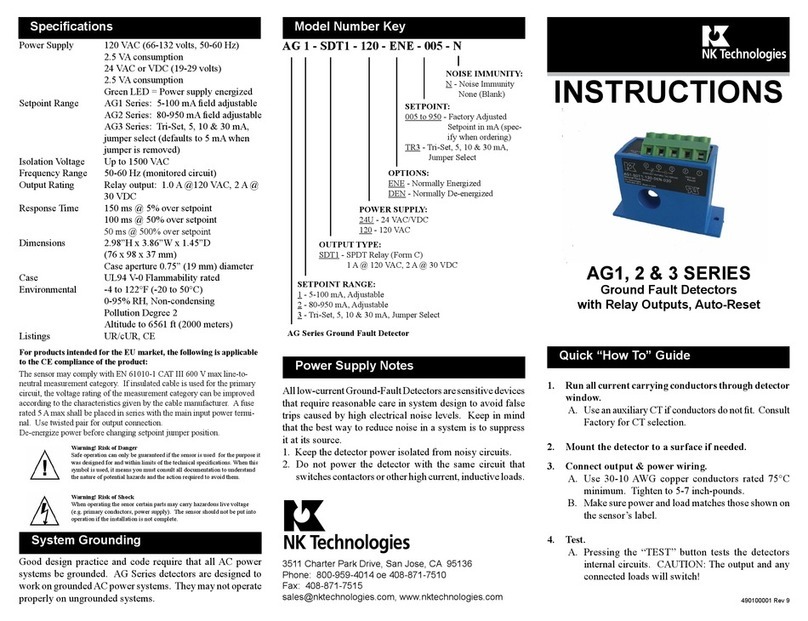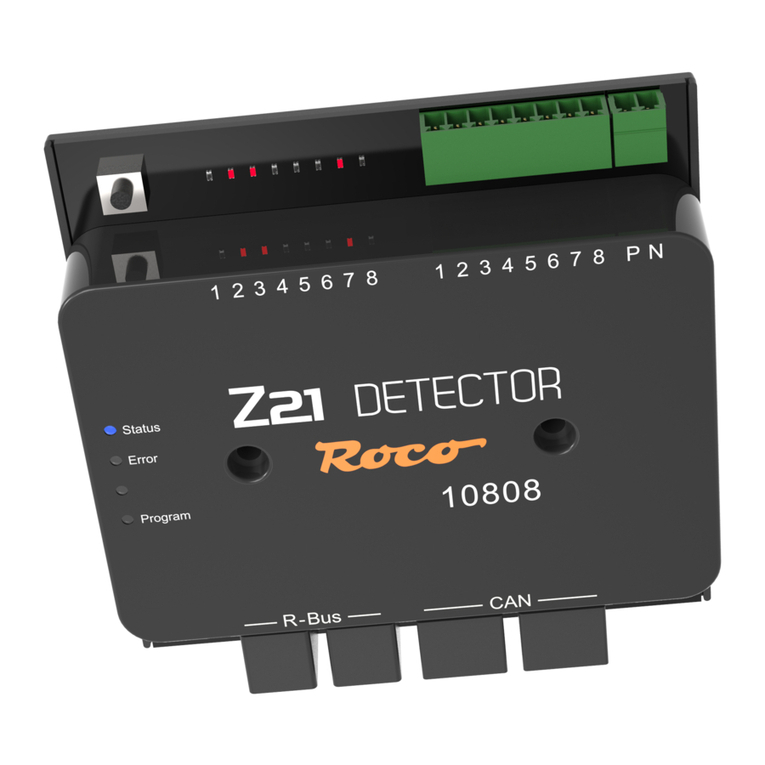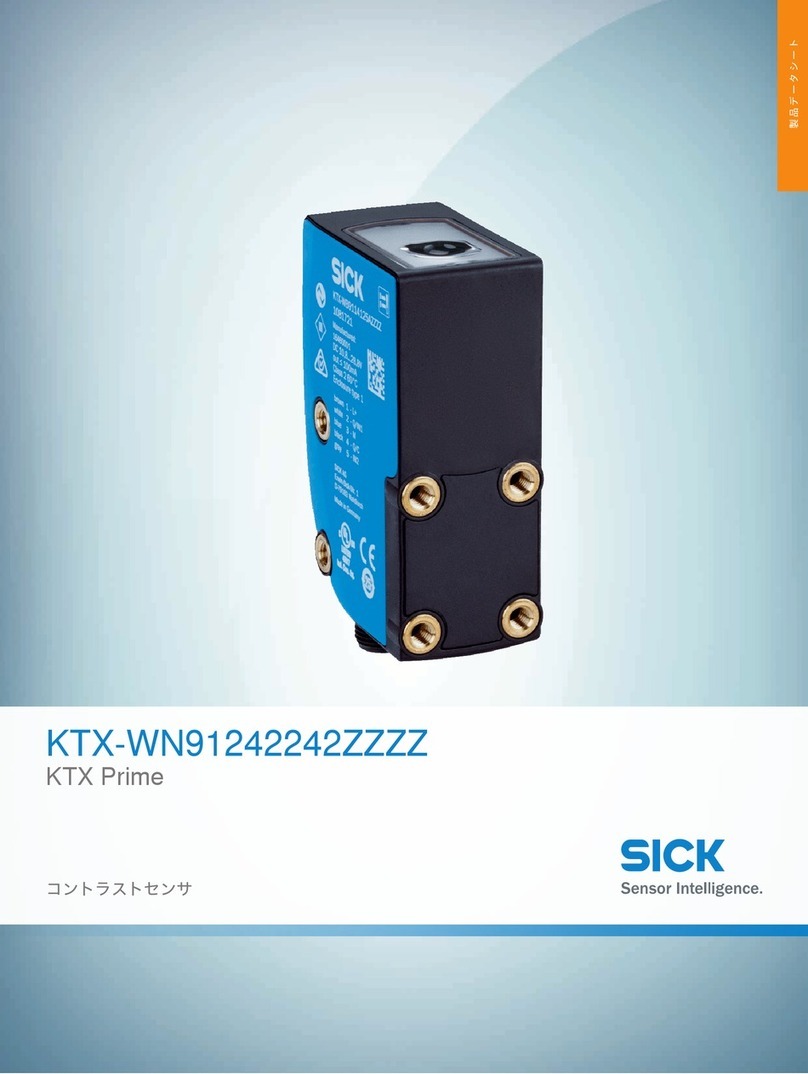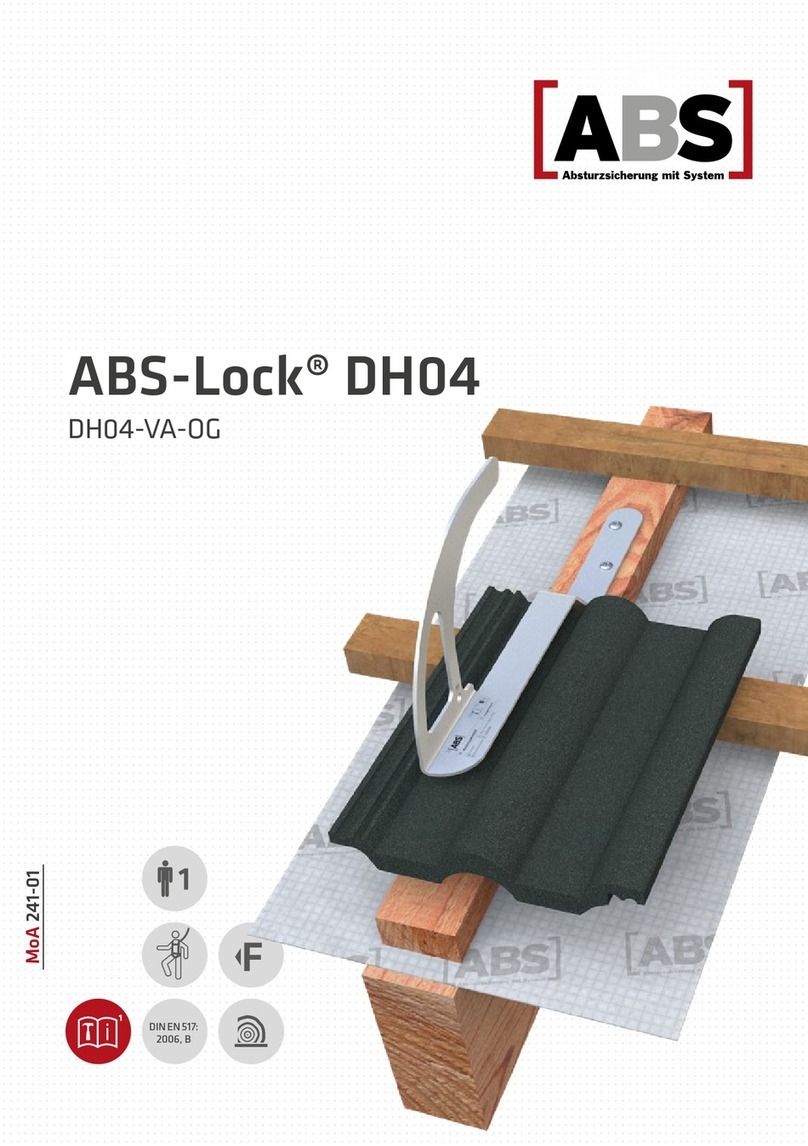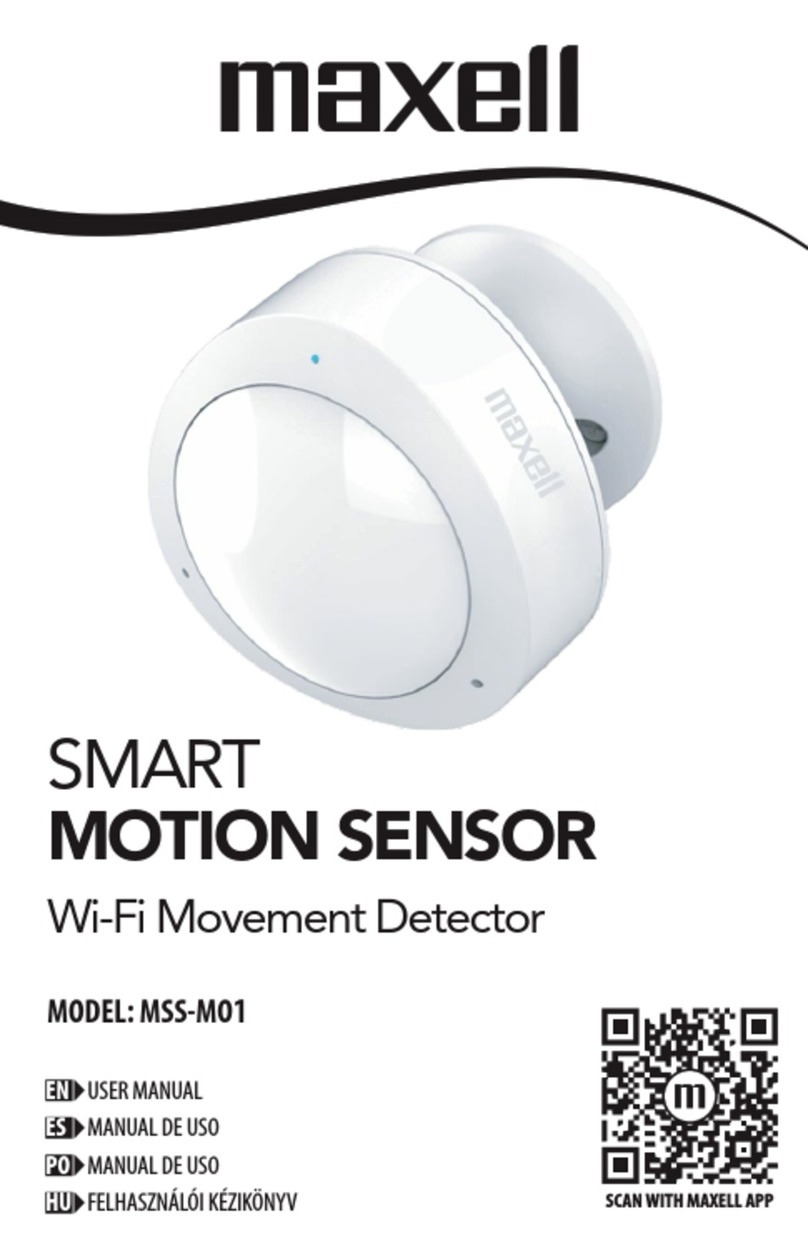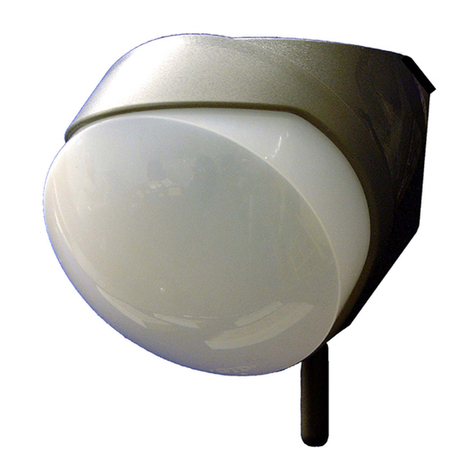Beha-Amprobe ULD-400-EUR User manual

ULD-400-EUR
Ultrasonic Leak Detector
ULD-410-EUR
ULD-420-EUR
CZK


ULD-400-EUR
Ultrasonic Leak Detector
ULD-410-EUR
ULD-420-EUR
User Manual
10/2019, 6012571 A
©2019 Beha-amprobe.
All rights reserved.
English

Limited Warranty and Limitation of Liability
Your Beha-Amprobe product will be free from defects in material and workmanship for
two years from the date of purchase unless local laws require otherwise. This warranty does
not cover fuses, disposable batteries or damage from accident, neglect, misuse, alteration,
contamination, or abnormal conditions of operation or handling. Resellers are not authorized
to extend any other warranty on the behalf of Beha-Amprobe. To obtain service during the
warranty period, return the product with proof of purchase to an authorized Beha-Amprobe
Service Center or to an Beha-Amprobe dealer or distributor. See Repair Section for details. THIS
WARRANTY IS YOUR ONLY REMEDY. ALL OTHER WARRANTIES - WHETHER EXPRESS, IMPLIED
OR STATUTORY - INCLUDING IMPLIED WARRANTIES OF FITNESS FOR A PARTICULAR PURPOSE
OR MERCHANTABILITY, ARE HEREBY DISCLAIMED. MANUFACTURER SHALL NOT BE LIABLE
FOR ANY SPECIAL, INDIRECT, INCIDENTAL OR CONSEQUENTIAL DAMAGES OR LOSSES, ARISING
FROM ANY CAUSE OR THEORY. Since some states or countries do not allow the exclusion or
limitation of an implied warranty or of incidental or consequential damages, this limitation of
liability may not apply to you.
Repair
All Beha-Amprobe tools returned for warranty or non-warranty repair or for calibration
should be accompanied by the following: your name, company’s name, address, telephone
number, and proof of purchase. Additionally, please include a brief description of the
problem or the service requested and include the test leads with the product. Non-warranty
repair or replacement charges should be remitted in the form of a check, a money order,
credit card with expiration date, or a purchase order made payable to Beha-Amprobe.
In-warranty Repairs and Replacement – All Countries
Please read the warranty statement and check your battery before requesting repair. During
the warranty period, any defective test tool can be returned to your Beha-Amprobe distributor
for an exchange for the same or like product. Please check the “Where to Buy” section on
beha-amprobe.com for a list of distributors near you. Additionally, in the United States and
Canada, in-warranty repair and replacement units can also be sent to an Amprobe Service
Center (see address below).
Non-warranty Repairs and Replacement – Europe
European non-warranty units can be replaced by your Beha-Amprobe distributor for a
nominal charge. Please check the “Where to Buy” section on beha-amprobe.com for a list of
distributors near you.
Beha-Amprobe
Division and reg. trademark of Fluke Corp. (USA)
Germany*
In den Engematten 14
79286 Glottertal
Germany
Phone: +49 (0) 7684 8009 - 0
beha-amprobe.de
United Kingdom
52 Hurricane Way
Norwich, Norfolk
NR6 6JB United Kingdom
Phone: +44 (0) 1603 25 6662
beha-amprobe.com
The Netherlands - Headquarters**
Science Park Eindhoven 5110
5692 EC Son
The Netherlands
Phone: +31 (0) 40 267 51 00
beha-amprobe.com
*(Correspondence only – no repair or replacement available from this address. European
customers please contact your distributor.)
**single contact address in EEA Fluke Europe BV

1
ULD-400-EUR Ultrasonic Leak Detector
CONTENTS
1. PRECAUTIONS AND SAFETY MEASURES ............................................................. 2
2. INTRODUCTION ..................................................................................................... 3
3. KIT COMPONENTS................................................................................................. 4
3.1 Kit Components ............................................................................................................4
3.2 ULD-400-RE Receiver .....................................................................................................5
3.3 ULD-400-TE Transmitter ................................................................................................6
3.4 Accessories ....................................................................................................................7
4. MAIN APPLICATIONS ............................................................................................ 8
4.1 Using the ULD-400-RE Ultrasonic Leak Detector Receiver ..........................................8
4.2 Using the ULD-400-TE Ultrasonic Leak Detector Transmitter .....................................10
5. MAINTENANCE...................................................................................................... 11
5.1 Changing the Receiver Batteries ..................................................................................11
5.2 Changing the Transmitter Batteries .............................................................................12
5.3 Cleaning .........................................................................................................................12
6. SPECIFICATIONS .................................................................................................... 13

2
1. PRECAUTIONS AND SAFETY MEASURES
SYMBOLS
�Caution! Refer to the explanation in this manual.
Consult user documentation.
Battery.
Complies with European Directives.
Conforms to relevant South Korean EMC Standards.
Electromagnetic Compatibility:
Korea (KCC): Class A Equipment (Industrial Broadcasting & Communication Equipment) [1]
[1] This product meets requirements for industrial (Class A) electromagnetic wave
equipment and the seller or user should take notice of it. This equipment is intended for
use in business environments and is not to be used in homes.
Conforms to relevant Australian standards.
This product complies with the WEEE Directive marking requirements. The affixed
label indicates that you must not discard this electrical/electronic product in
domestic household waste. Product Category: With reference to the equipment
types in the WEEE Directive Annex I, this product is classed as category 9
“Monitoring and Control Instrumentation” product. Do not dispose of this product
as unsorted municipal waste.
Safety information
The product complies with:
• IEC 61326-1
CENELEC Directives
The instrument conforms to CENELEC Electromagnetic compatibility directive 2014/30/EU.
�WARNINGS AND PRECAUTIONS
• Not for use on explosive gases.
• Use extreme care when using near pressurized air/gas.
• Use extreme care when using near rotation equipment.
• Use extreme care when using near electrical equipment.
• Use only 4 x AA batteries for the ULD-400-RE Receiver and only 2 x AAA size batteries
for the ULD-400-TE Transmitter, properly installed in the battery compartment, to
power the Product (see Section 5: Maintenance).
• Remove the batteries if the Product is not used for an extended period of time, or if
stored in temperatures above 50 °C (122 °F). If the batteries are not removed, battery
leakage can damage the Product.
• Follow all battery care from the battery manufacturer.

3
Ultrasonic sound, or ultrasound, is a sound wave with frequencies above 20 kHz, higher
than the upper audible limit of human hearing. Ultrasound can be generated when
turbulence created by air or gas is forced through a small orifice. Leaking air or gas is
generally considered to be viscous flow, and as the flow velocity increases, the frequency
of the ultrasound emitted becomes higher. Vibrating, moving objects or electric discharge
will also create an ultrasonic wave, which is very directional in nature and can be used to
pinpoint the exact location of a leak, vibration or discharge.
The ULD-400-RE Receiver detects ultrasounds within 20 kHz to 90 kHz frequency, then
amplifies and converts these ultrasonic sounds to frequencies and levels that the human
ear can hear through headphones and show it on the LCD screen. The 20 kHz to 90 kHz
frequency range is the optimal range for detecting a variety of leakage events in assets such
as HVAC systems and pneumatic lines. A change in the ultrasound produced by an asset may
be indicative that an asset is beginning to fail.
0
20kHz
20Hz 200
MHz
20MHz
Infrasound Acoustic Sound Ultrasound
Figure 2: Sound range spectrum
2. INTRODUCTION

4
3.1 Kit Components
Your shipping box should include:
ULD-410-EUR ULD-420-EUR
ULD-400-RE Receiver 1 1
ULD-400-TE Transmitter - 1
Headphones 1 1
Earbuds (for use with hard hat) 1 1
PB-1 Power Parabola 1 1
TEA-1 Flexible Tubing Adapter 1 1
TE-1 Tubular Extension 1 1
CC-ULD-400-EUR Hard Carrying Case 1 1
AA Batteries (Receiver) 4 4
AAA Batteries (Transmitter) - 2
Manual 1 1
Note: Batteries are not pre-installed in the Receiver or Transmitter.
3. KIT COMPONENTS

5
3.2 ULD-400-RE Receiver
Sound
volume
Microphone
sensor
Sensitivity
“+/-” button
Headphone
Volume "+/-"
button
On/Off button
Signal strength
indication
Sensitivity
level
Signal
filter
Auto Filter
button
Headphone
jack
Battery
status
Figure 3.2: ULD-400-RE Receiver
3. KIT COMPONENTS

6
3. KIT COMPONENTS
3.3 ULD-400-TE Transmitter
The ULD-400-TE Transmitter is included with the ULD-420-EUR kit and is optional for the
ULD-410-EUR kit.
When a leak is not pressurized sufficiently the Receiver will not be able to detect it. In these
circumstances, the ULD-400-TE Transmitter can be used to emit an ultrasonic sound that
the Receiver can read. The Transmitter is programmed with three signal levels for precise
pinpointing of leaks.
Speaker
Low battery
indicator
LEDs:
high/
medium/low
signals
On/Off button
Signal level “+/-”
button
Figure 3.3: ULD-400-TE Transmitter

7
3.4 Accessories
The ULD-400-EUR comes supplied with additional Receiver accessories that are helpful
in leak identification. Plug the headphones into the Receiver to audibly hear the leak
and verify its source (for example hissing sound of an air leak versus ticking sound of an
electric discharge). Use the Parabola attachment in situations where there is a high level
of background noise to help direct the ultrasound towards the sensor. Use the Tubular
Extension with the Adapter in hard to reach areas for additional reach.
Note: There is no speaker on the Receiver. Without headphones, no noise will be audible.
Parabola (PB-1) Adapter (TEA-1) Tubular Extension
(TE-1)
Tubular Extension
(TE-1)
Adapter (TEA-1)
Parabola (PB-1)
Figure 3.4: ULD-400-EUR Accessories
3. KIT COMPONENTS

8
4.1 Using the ULD-400-RE Ultrasonic Leak Detector Receiver
1. Turn on the Receiver and plug the headphones into the jack located on the front of the
Receiver. Any standard set of 3.5 mm jack headphones are compatible.
2. Before moving to the target area, press “+” or “-” sensitivity buttons to adjust signal
strength sensitivity to the highest possible level where bargraph still shows either 0 or
a value close to 0. If signal strength cannot be adjusted down and the LCD still shows a
maximum value regardless on sensitivity adjustments, press the Filter button.*
3. Scan the target area with the microphone sensor.
4. As you move nearer to the source of the leak, vibration or electric discharge, the signal
strength will increase. This will be indicated on a screen with increasing signal strength
number and level of the bargraph.
5. The bargraph is a relative measurement only, so when the signal strength reaches
maximum, lower the sensitivity by pressing the “-” sensitivity button until the displayed
signal strength is less than 75. Repeat this process until you have isolated the source of
the ultrasound.
6. The audible sound emitted via headphones will help to verify the source of the leak,
for example hissing sound of the air leak versus ticking sound of the electric discharge.
The Receiver screen alone will not provide an indication of the leak source.
Note:
• For surroundings with a high level of background noise use the Parabola (PB-1) to
direct the ultrasound towards the sensor.
• For locations that you cannot point the Receiver directly at the leak, the Tubular
Extension can be used (TE-1 with the TEA-1 Adapter).
Figure 4.1a: Using the Receiver to find a leak
4. MAIN APPLICATIONS

9
*ULD-400-RE Filter Operation
In some situations, there might be strong ultrasonic noise generated by running machinery, motion
sensors or other equipment. This noise will cause the Receiver to read the maximum signal strength
on the display regardless of the sensitivity settings and make it unusable for detecting leaks.
In such cases, press the “Filter” button. The firmware will automatically detect the main noise
frequency and filter it out by applying digital non-pass bandwidth filter within +/- 5 kHz. If the
signal level does not decrease down close to 0, then the firmware will automatically repeat the
process for other noise frequencies. Up to three frequencies can be filtered out automatically. The
filter icon will be displayed on the screen and will indicate the number of filters applied, from zero
(no noise detected) to a maximum of three.
3
Figure 4.1b: Filter applied
Note: The filter will be applied to the visual signal indication on a screen (signal strength number
and bargraph). The filter will NOT be applied to the audio frequency in order to preserve
original sound of the leak and allow the user to better determine the source of the leak.
Note: When working with the Transmitter, make sure to apply the filter on the Receiver before
the Transmitter is turned on, or in an area where the Transmitter signal can not be detected.
Otherwise, the Transmitter signal frequency will be filtered out and Receiver will not be able
to pick it up.
4. MAIN APPLICATIONS

10
4.2 Using the ULD-400-TE Ultrasonic Leak Detector Transmitter
The Transmitter allows for ultrasonic detection of openings in locations where there is no gas or
air pressure, or the pressure is not sufficient to detect the leak with the Receiver alone.
Typical applications include verifying tightness or pinpointing places of air, water or gas leaks in:
• Fluid or gas tanks
• Building windows, doors or roofs
• Car windows and windshields
• HVAC vents
• Refrigerant pipelines
The process involves placing the Transmitter inside an object (such as tank, house or a car),
sealing the entryways and scanning the object from the outside with the Receiver to verify
tightness and pinpoint potential leaks.
1. Turn on the Transmitter.
2. Select the output signal level using the “+” or “-” signal level adjustment buttons.
Note: High setting is the default setting. For most applications and specifically for large
objects this setting is particularly useful. The High signal may cause the Receiver to read
maximum value away from the place of the leak even when lowest sensitivity was
selected. Press “-” once to get to Medium signal and press “-” again to get to Low signal
strength. Adjust signal level to allow for more precise pinpointing of the leaks.
3. Place the Transmitter inside the object to be verified and make sure entryways are sealed.
4. Preform leak detecting with the Receiver as described in section 4.1.
Figure 4.2: Using the Transmitter and Receiver to find a leak
4. MAIN APPLICATIONS

11
5. MAINTENANCE
5.1 Changing the Receiver Batteries
The ULD-400-RE uses four 1.5 V AA (LR6) batteries (supplied). To replace the batteries, follow
these steps:
1. Make sure that the Receiver is turned off.
2. Use a screw driver to unscrew the captive screw.
3. Remove the battery cover.
4. Replace the batteries as shown in Figure 5.1. Observe the battery polarity shown in the
battery compartment.
5. Replace the battery cover and secure it with the provided screw.
AA
AA
AA
AA
Figure 5.1: Changing the Receiver batteries

12
5.2 Changing the Transmitter Batteries
The ULD-400-TE uses two 1.5 V AAA (LR03) batteries (supplied with ULD-420-EUR). To replace
the batteries, follow these steps:
1. Make sure that the Transmitter is turned off.
2. Loosen the battery-door lock with a flat screwdriver.
3. Remove the battery cover.
4. Replace the batteries as shown in Figure 5.2. Observe the battery polarity shown in the
battery compartment.
5. Replace the battery cover to the lock position.
AAA
AAA
Figure 5.2: Replacing the Transmitter batteries
5.3 Cleaning
The only maintenance the ULD-400-EUR requires is inspection and cleaning. Periodically wipe the
exterior with a mild solution of detergent and water. Apply sparingly with a soft cloth and allow to
dry completely before using. Do not use aromatic hydrocarbons, gasoline or chlorinated solvents
for cleaning.
5. MAINTENANCE

13
6. SPECIFICATIONS
Features ULD-400-RE ULD-400-TE
Sensitivity Adjustment Yes N/A
Volume Adjustment Yes N/A
Signal Level Adjustment N/A Yes
Earphone Jack Yes
(compatible with 3.5 mm audio jack)
N/A
Display Size LCD 6.35 cm (2.5 in) N/A
Display Dimensions 36.72 x 48.96 mm (1.45 x 1.93 in) N/A
Display Resolution 240(RGB) x 320 pixels N/A
Display Type TFT-LCD (262 K) N/A
Display Color True, 16bit/color N/A
Frequency Range 20 kHz to 90 kHz Typical 40 kHz squarewave
Filter ±5 KHz of main noise frequency,
up to three filters N/A
Power Supply 4 x 1.5 V AA (LR6) alkaline batteries
2 x 1.5 V AAA (LR03) alkaline batteries
Power Consumption
(typical)
75 mA 33 mA
Battery Life (typical) 105 hours (Alkaline) 60 hours (Alkaline)
Low battery indication Yes (Red LED)
APO function 60 minutes when in idle 60 minutes when in idle
Weight Approx. 0.235 kg (0.518 lb) Approx. 0.335 lb (0.152 kg)
Dimensions 183 x 75 x 43 mm
(7.547 x 2.984 x 1.791 in)
137 x 65 x 33 mm
(5.295 x 2.559 x 1.326 in)
Operating Temperature -20 °C to 50 °C (-4 °F to 122 °F)
Storage Temperature -20 °C to 70 °C (-4 °F to 158 °F)
Operating Humidity <80% RH
Pollution Degree 2
Protection IP40
Certifications
Electromagnetic
Compatibility (EMC)
EN 61326-1
Korea (KCC): Class A Equipment (Industrial Broadcasting & Communication
Equipment) [1]
[1] This product meets requirements for industrial (Class A) electromagnetic
wave equipment and the seller or user should take notice of it. This
equipment is intended for use in business environments and is not to be used
in homes.


ULD-400-EUR
Ultraschall-Leckdetektor
ULD-410-EUR
ULD-420-EUR
Bedienungsanleitung
10/2019, 6012571 A
©2019 Beha-amprobe.
Alle Rechte vorbehalten.
Deutsch

Eingeschränkte Garantie und Haftungseinschränkungen
Innerhalb von zwei Jahren ab Kaufdatum oder innerhalb des gesetzlich vorgeschriebenen
Mindestzeitraums garantieren wir, dass Ihr Beha-Amprobe-Produkt keinerlei Material-
und Herstellungsfehler aufweist. Sicherungen, Trockenbatterien sowie Schäden durch
Unfall, Fahrlässigkeit, Missbrauch, Manipulation, Kontamination sowie anomale Nutzung
und Einsatzbedingungen werden nicht durch die Garantie abgedeckt. Händler sind nicht
berechtigt, jegliche Erweiterungen der Garantie im Namen von Beha-Amprobe in Aussicht zu
stellen. Um Serviceleistungen während der Garantiezeit in Anspruch zu nehmen, übergeben
Sie das Produkt mitsamt Kaufbeleg einem autorisierten Beha-Amprobe-Servicecenter oder
einem Beha-Amprobe-Händler oder -Distributor. Details dazu finden Sie im Reparatur-
Abschnitt. SÄMTLICHE ANSPRÜCHE IHRERSEITS ERGEBEN SICH AUS DIESER GARANTIE.
SÄMTLICHE SONSTIGEN GEWÄHRLEISTUNGEN ODER GARANTIEN, OB AUSDRÜCKLICH,
IMPLIZIT ODER SATZUNGSGEMÄSS, SOWIE GEWÄHRLEISTUNGEN DER EIGNUNG FÜR EINEN
BESTIMMTEN ZWECK ODER HANDELSTAUGLICHKEIT WERDEN HIERMIT ABGELEHNT. DER
HERSTELLER HAFTET NICHT FÜR SPEZIELLE, INDIREKTE, BEILÄUFIGE ODER FOLGESCHÄDEN
SOWIE FÜR VERLUSTE, DIE AUF ANDERE WEISE EINTRETEN. In bestimmten Staaten oder
Ländern sind Ausschlüsse oder Einschränkungen impliziter Gewährleistungen oder
beiläufiger oder Folgeschäden nicht zulässig; daher müssen diese Haftungseinschränkungen
nicht zwingend auf Sie zutreffen.
Reparatur
Sämtliche innerhalb oder außerhalb der Garantiezeit zur Reparatur oder Kalibrierung
eingereichten Geräte von Beha-Amprobe sollten mit folgenden Angaben begleitet
werden:Ihr Name, Name Ihres Unternehmens, Anschrift, Telefonnummer und Kaufbeleg.
Zusätzlich fügen Sie bitte eine Kurzbeschreibung des Problems oder der gewünschten
Dienstleistung bei, vergessen Sie auch die Messleitungen des Produktes nicht. Gebühren für
Reparaturen oder Austausch außerhalb der Garantiezeit sollten per Scheck, Überweisung,
Kreditkarte (mit Angabe des Ablaufdatums) oder per Auftrag zugunsten Beha-Amprobes
beglichen werden.
Reparatur und Austausch innerhalb der Garantiezeit – Alle Länder
Bitte lesen Sie die Garantiebedingungen und prüfen Sie den Zustand der Batterie, bevor
Sie Reparaturleistungen in Anspruch nehmen. Innerhalb der Garantiezeit können sämtliche
defekten Prüfwerkzeuge zum Austausch gegen ein gleiches oder gleichartiges Produkt an
Ihren Beha-Amprobe-Distributor zurückgegeben werden. Eine Liste mit Distributoren in
Ihrer Nähe finden Sie im Bereich Vertriebspartner unter beha-amprobe.com. In den USA
und in Kanada können Geräte zum Austausch oder zur Reparatur auch an das Amprobe-
Servicecenter (Anschrift weiter unten) eingesandt werden.
Reparatur und Austausch außerhalb der Garantiezeit – Europa
In Europa können Geräte außerhalb der Garantiezeit gegen eine geringe Gebühr von Ihrem
Beha-Amprobe-Distributor ausgetauscht werden. Eine Liste mit Distributoren in Ihrer Nähe
finden Sie im Bereich Vertriebspartner unter beha-amprobe.com.
Beha-Amprobe
Abteilung und registrierte Marke von Fluke Corp. (USA)
Deutschland*
In den Engematten 14
79286 Glottertal
Deutschland
Telefon: +49 (0) 7684 8009 - 0
beha-amprobe.de
Vereinigtes Königreich
52 Hurricane Way
Norwich, Norfolk
NR6 6JB United Kingdom
Telefon: +44 (0) 1603 25 6662
beha-amprobe.com
Niederlande – Hauptsitz**
Science Park Eindhoven 5110
5692 EC Son
The Netherlands
Telefon: +31 (0) 40 267 51 00
beha-amprobe.com
* (Nur Korrespondenz – weder Reparatur noch Austausch über diese Adresse. Europäische
Kunden wenden sich bitte an ihren Distributor.)
**Einzelne Kontaktadresse in EEA Fluke Europe BV
This manual suits for next models
2
Table of contents
Languages:
Popular Security Sensor manuals by other brands
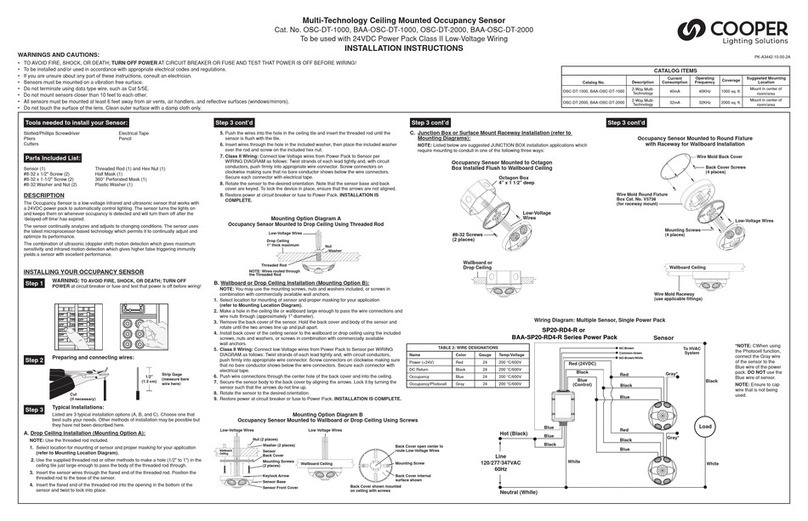
Cooper
Cooper OSC-DT-1000 installation instructions
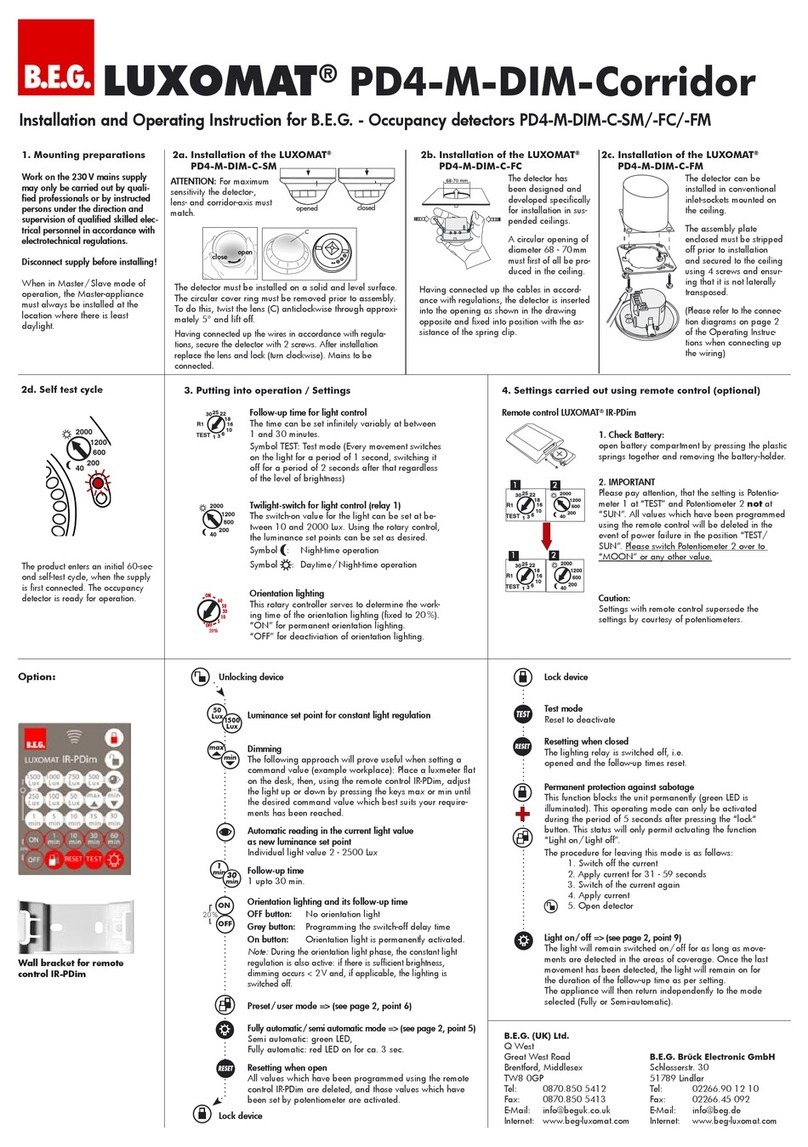
B.E.G.
B.E.G. LUXOMAT PD4-M-DIM-Corridor Series Installation and operating instruction
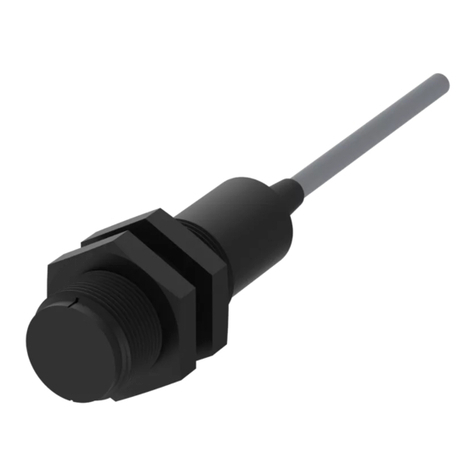
elobau
elobau 120 2 Series manual
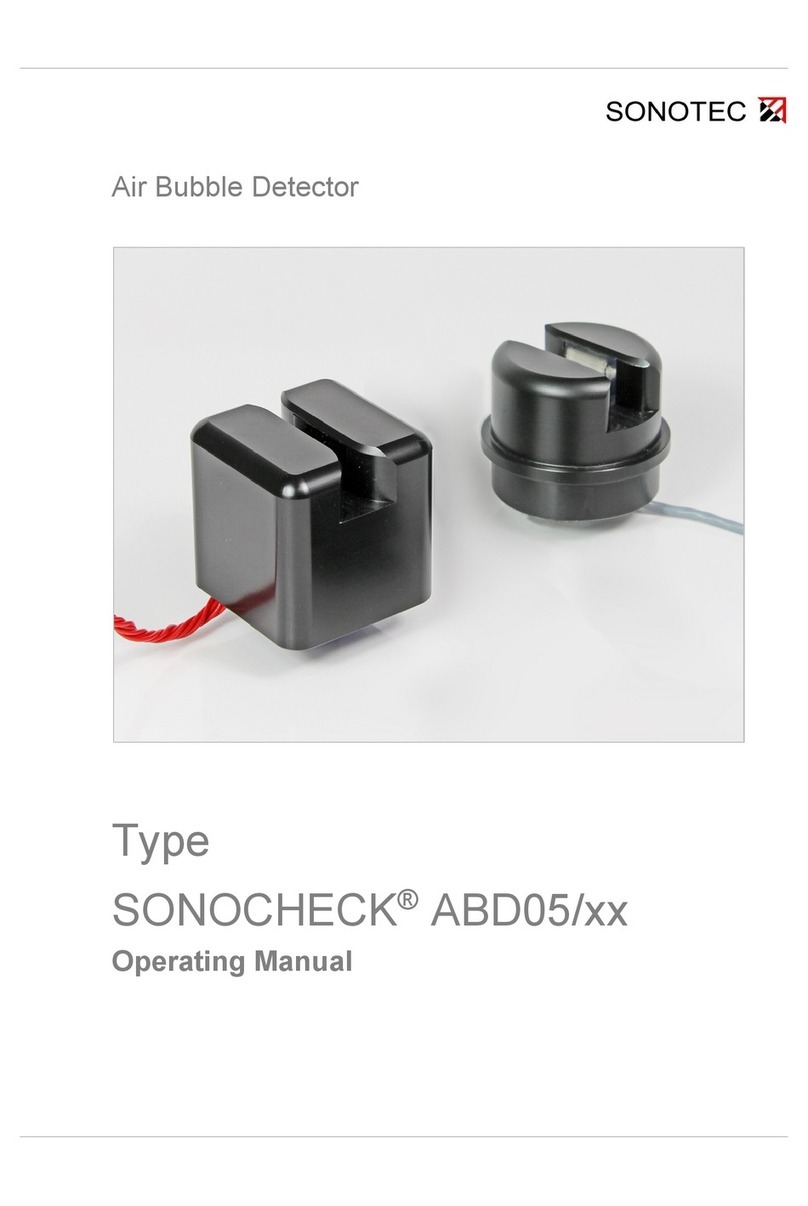
Sonotec
Sonotec SONOCHECK ABD05 Series operating manual
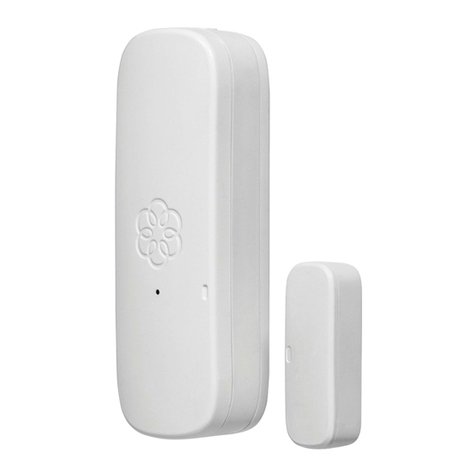
ooma
ooma Smart Security Door and Window Sensor quick start guide
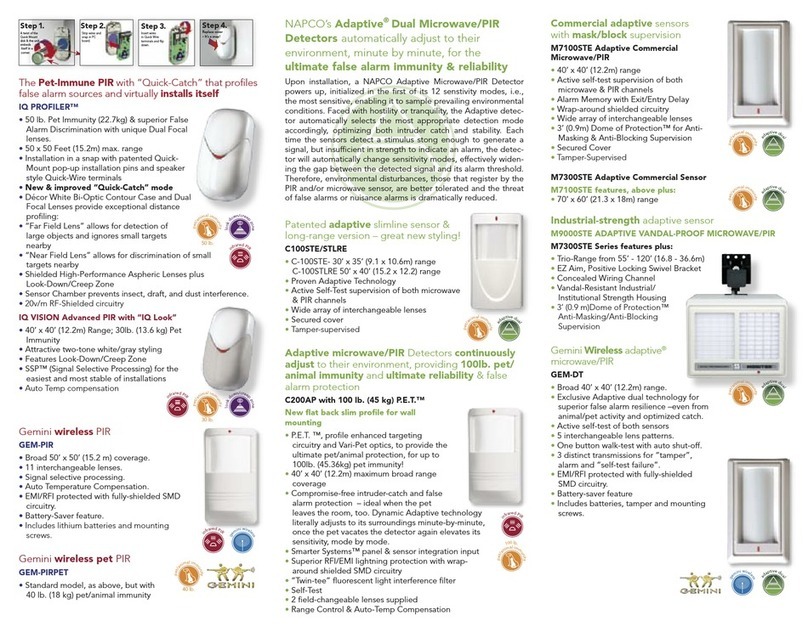
NAPCO
NAPCO IQ PROFILER - brochure

Genius KYE Systems
Genius KYE Systems WCS-110 user manual
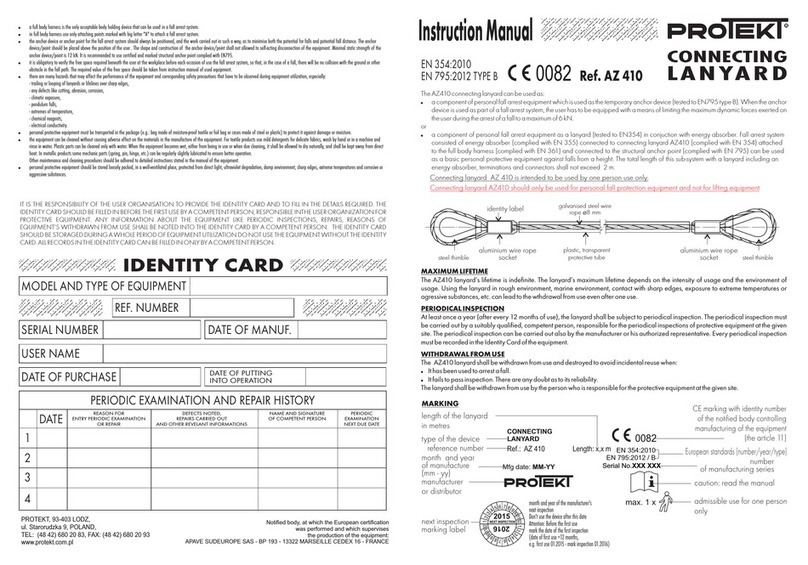
Protekt
Protekt AZ 410 instruction manual
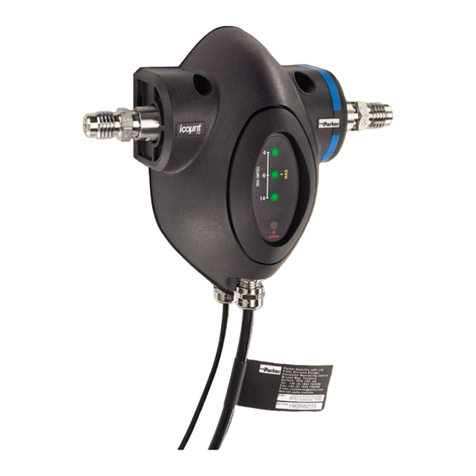
Parker
Parker icountPD user manual
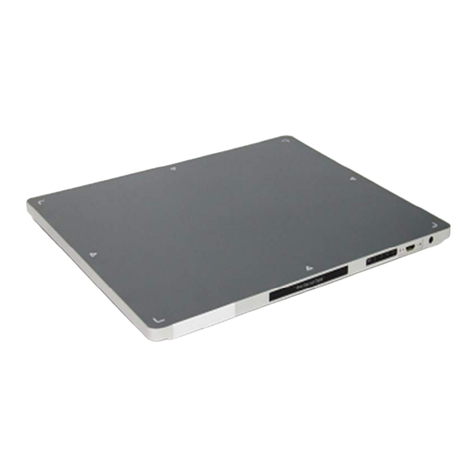
KTR
KTR Radisen PEDRA-1417M user manual

Honeywell
Honeywell LightSpot LS1000R Installation and operating instructions
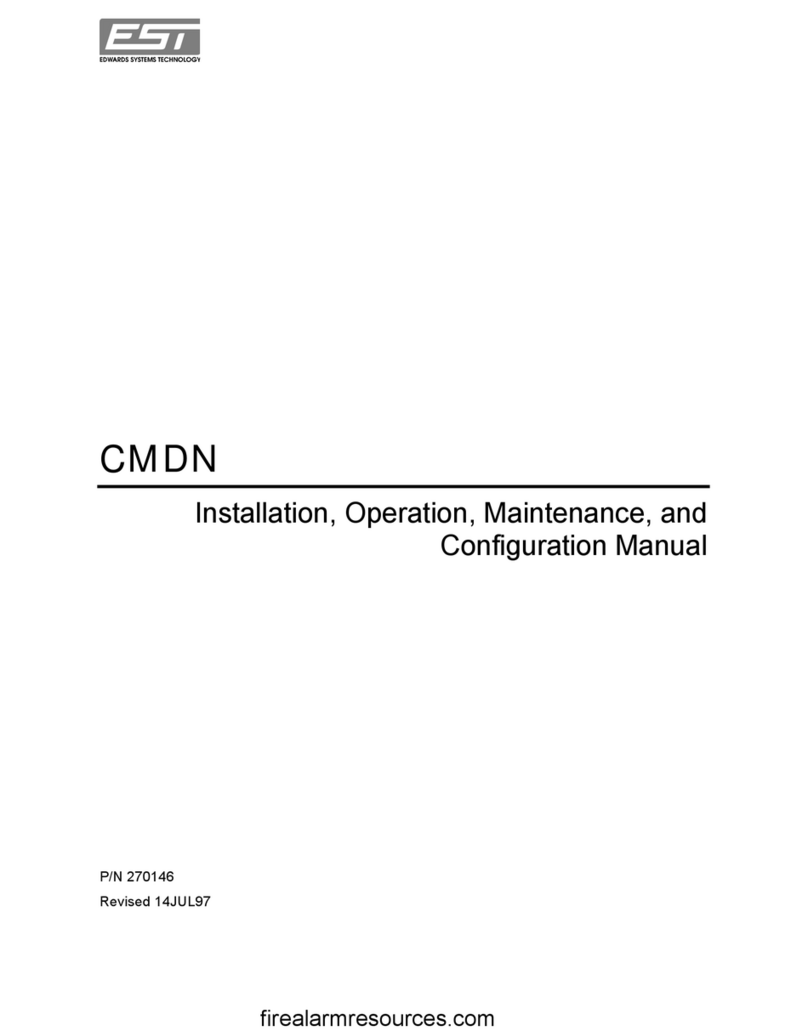
EDWARDS SYSTEMS TECHNOLOGY
EDWARDS SYSTEMS TECHNOLOGY CMDN Installation operation & maintenance
